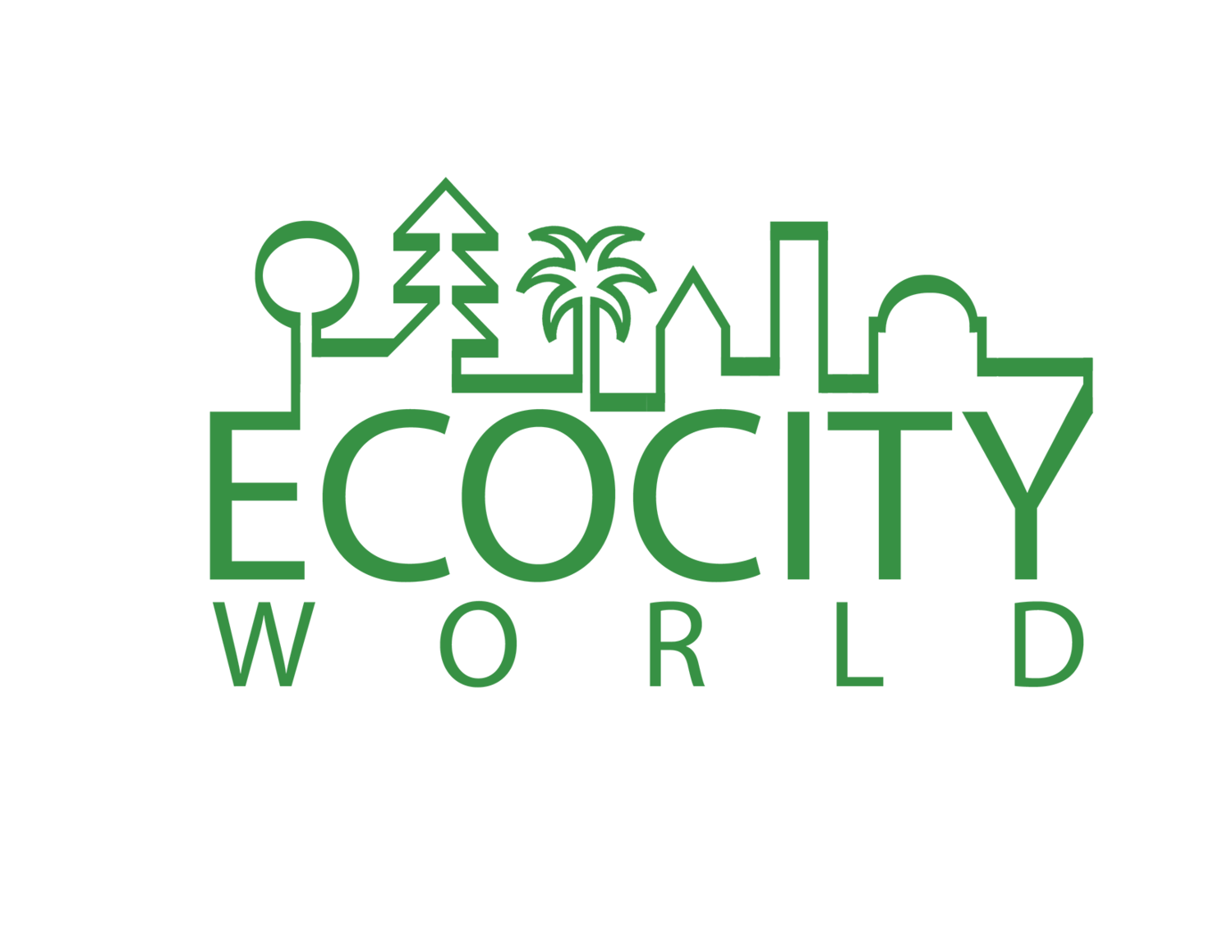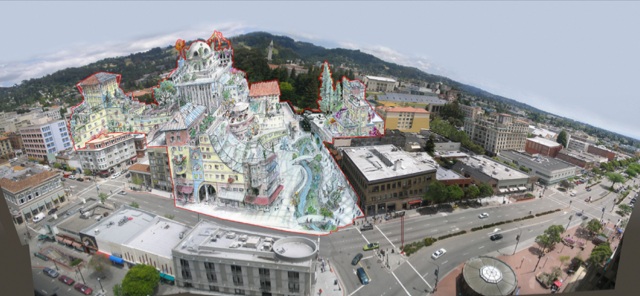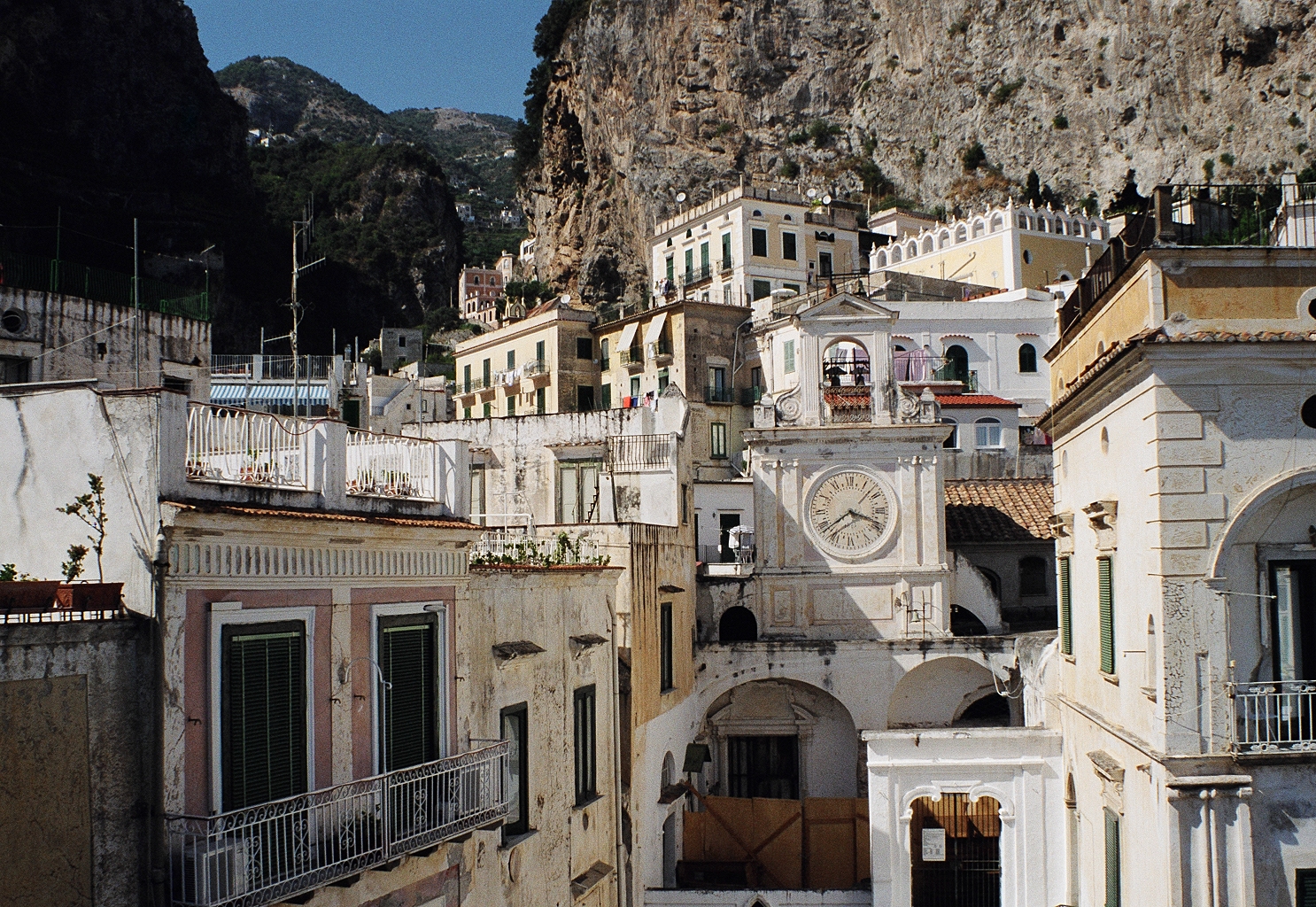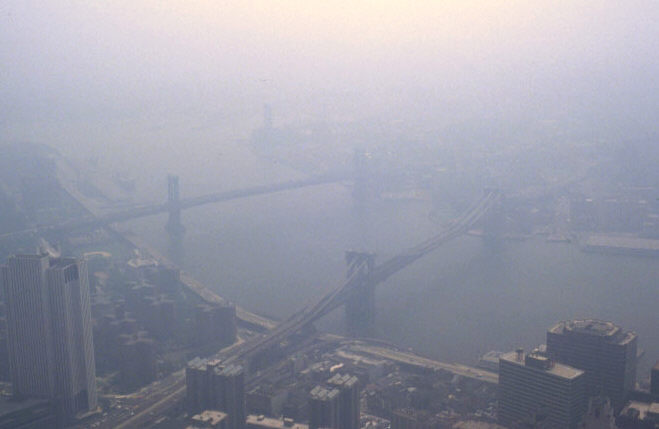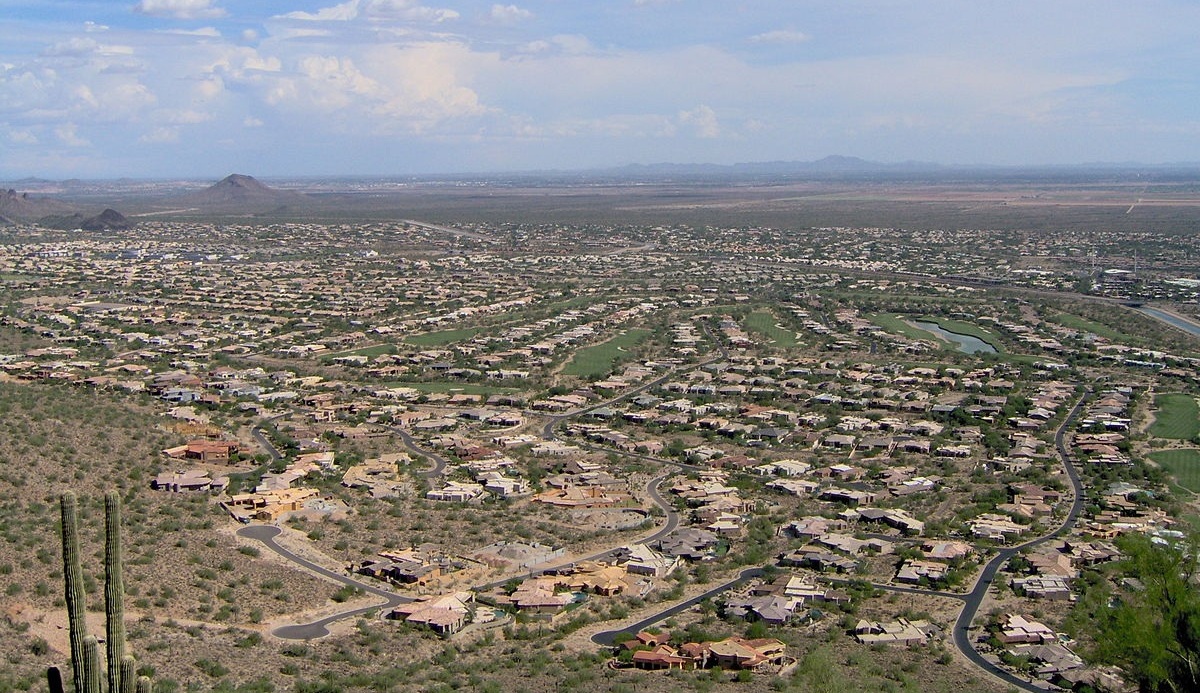Our long-range mission is nothing less than preserving and restoring the collective health of the planet.
How We Got Here
Historically, limited populations, resources and technology along with the need for defense kept cities structured and compact. (Medieval European hill towns are a well-known example.) Their pedestrian-focused layouts and infrastructure continued well into the 19th century, and they exhibited many ecocity features. But as the well-known story goes, the advent of the automobile and of readily available fuel led to low-density sprawl that became self-perpetuating as it required increasingly higher levels of resource consumption (and associated social status) that in turn encouraged yet more sprawl.
Over time, these development patterns have increasingly threatened the health of all species, human and not, through habitat destruction and degradation, pollution, homogenization of the built environment, declining social cohesion, sedentary lifestyles, and most ominously climate change and its foreseen and unforeseen impacts - impacts (notably wildfires and sea-level rise) to which sprawl itself makes us far more vulnerable. Though arguably low-density living is not without benefits, they have come at far too great a cost.
Over the past few decades, progress has certainly been made in increasing awareness of these detrimental effects and integrating sustainable features and practices into the design of cities, towns and villages, including green building technologies, re-densification of urban districts, modernization and expansion of mass transit, creation of pedestrian- and bicycle-friendly routes and zones, and preservation and restoration of open space. But such progress is nowhere near the amount needed to have any meaningful, timely impact on the overall health of the planet.
Cheonggyecheon Creek in Seoul, South Korea - before…
…and after.
Clearly we cannot, nor would we want to, reverse all of the cultural and technological changes that since the pre-industrial age have made today’s built environment what it is. But we now have no choice but to be, as a civilization, more selective about which technologies, practices and values to embrace and which to let go. This will be an epic challenge: cultural and psychological barriers to curtailing the expectations of modern life, and to physical change itself, currently guarantee that existing development patterns won’t be re-thought, let alone reversed, to any meaningful degree. Inserting structure and deliberation into the chaotic, competing drivers of urban development, not to mention literally deconstructing past mistakes, will be a monumental task not only to achieve but to undertake in the first place.
But monumental changes in urban environments and the habits that drive them have already been underway for decades. And, more importantly, climate change and its effects guarantee that drastic disruptions and deprivations are coming whether we like it or not. It is up to us to decide whether these changes will be primarily the ones we want or the ones we do not.
Mission and Goals
Top and bottom, urban densification - saving land, energy and time (drawings by Richard Register)
Ecocity World’s long-range mission is nothing less than preserving and restoring the collective health of the planet - human and non-human - by advocating for ecocity principles as the global standard in future urban development and in the re-development of existing cities. We may not get there, but we passionately believe that the current state of society and the environment tells us that we have no choice but to try. Once again, unprecedented disruption in the natural and human environments is on its way no matter what we do; we can potentially control only whether that disruption resembles more a rapid evolution or a collapse. Most likely a series of major interconnected crises – meteorological, ecological, medical, economic - is already baked in. But, we might avoid a total collapse of the world as we know it if we start now to imagine and build an alternative future, one that leaves us more prepared to absorb the shock when we no longer have the choices we think we do now.
We have identified the following shorter-term goals working toward this end:
Explore what needs to be done, defining ecocity principles in depth and detail while preserving adaptability to urban conditions worldwide
Explore how it can be done, breaking a monumental physical and cultural undertaking into realistic steps and approaches
Spread the answers to these questions as broadly as possible, further increasing awareness of the problems we face, their solutions, and methods for achieving them
Design and build! Seek opportunities for putting ideas to the test, starting with models and evolving into common practice
These objectives will be embodied in the following projects/initiatives, some explored in more detail in the Projects section. Most are still in their infancy, but all are ready for input and effort:
Galápagos to the World: Evolution & Ecocities in Earth Year 2020 conference and model ecocity project, scheduled for December 2019 (in the buildup to the 50th anniversary Earth Day) pending funding
SF Bay Area Bigger Bay Ecotropolis including various approaches for urban re-densification and nature restoration, and for disaster readiness and response
Fire-Safe Villages & Towns for the California Central Valley, Coastal Range and Sierra Foothills
Ecocity Education Initiative involving Richard’s books and their distribution, plus services provided by our Speakers and Consultants Bureau currently composed of eleven people worldwide
Monthly Newsletter to keep members in close contact and to provide both in-house and public ecocity education
Future conferences and other educational events
Book writing, publishing and promotion
Ecocity World is proud to collaborate with the WILD Foundation, a US-based not-for-profit conservation organization working globally since 1974 to protect wilderness and promote wildness.
Concept for a fire-safe ecocity for Mediterranean climates (drawing by Richard Register)
